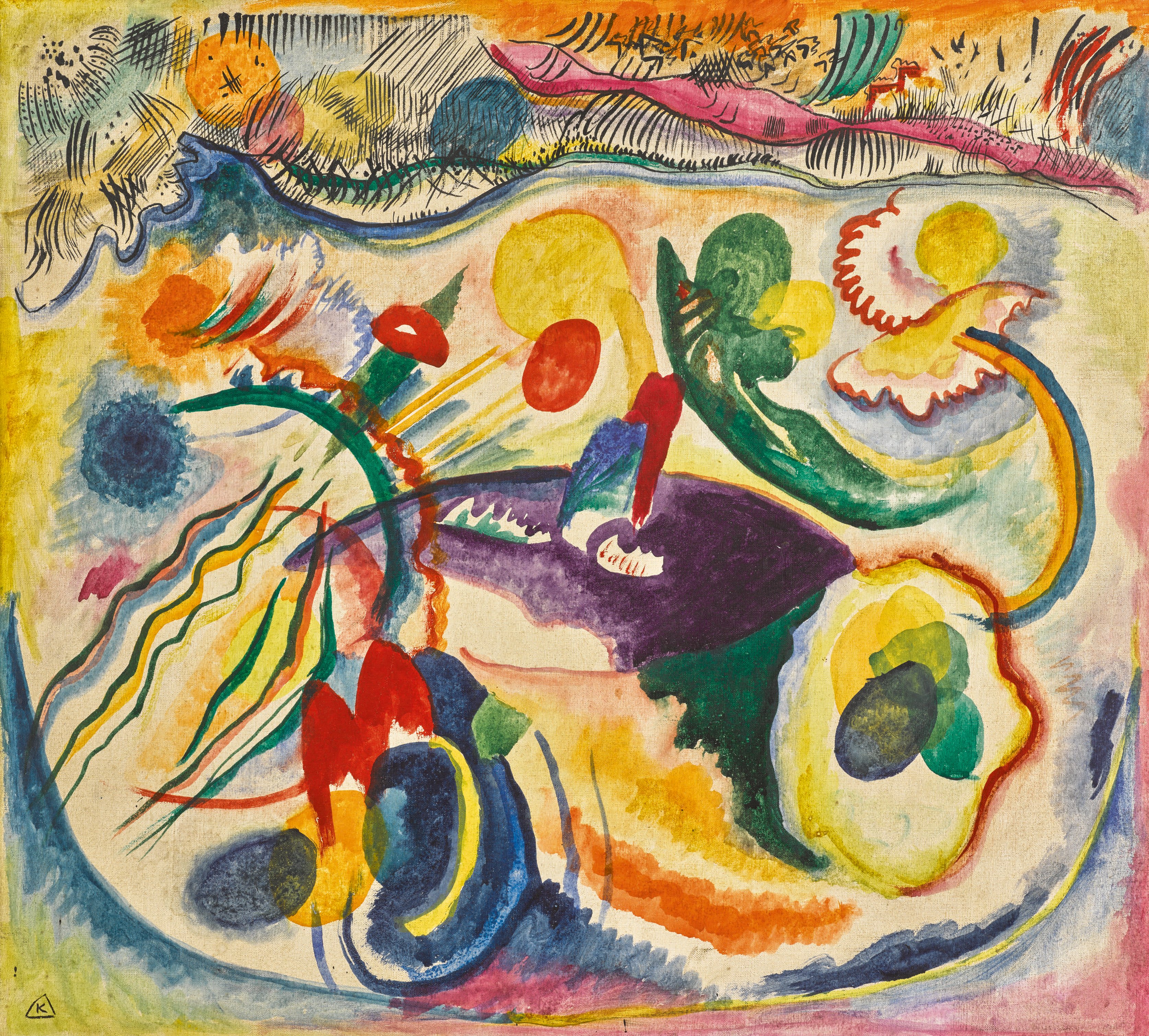
If there is an art-market equivalent to the experience of getting about three-quarters of the way through a fun night out before realizing you left your phone in a cab, Monday’s Impressionist and Modern Art evening sale at Sotheby’s might be it. Although five artist records were set and the $315.4 million total landed the auction as a whole within its pre-sale estimate range of $283.9 million to $393.4 million, the overall mood was marred by a late string of passed lots and the failure of one of its marquee works to find a buyer. (All prices include premium unless otherwise noted; pre-sale estimates do not.)
The marquee work in question was Marsden Hartley’s Pre-War Pageant (1913), estimated “in the region of $30 million” before the sale. After opening bidding at $20 million, auctioneer Harry Dalmeny only found another $4 million of interest in the audience, leaving the work short of the reserve price at $24 million.
Since the picture carried an in-house guarantee, Sotheby’s private sales team will inherit the responsibility of finding it a new home. Hartley’s current auction record of just $6.3 million, set at Christie’s in 2008 for Lighthouse (1915), will hold until next season.
Marsden Hartley, Pre-War Pageant (1913). Courtesy of Sotheby’s.
Of the 65 lots in the evening’s sale, Pre-War Pageant was among 15 to buy in, giving Sotheby’s a sell-through rate of 77 percent. And while the majority of the passed lots were of relatively low value, their force felt greater due to the sequencing of the auction. Ultimately, 10 of the evening’s final 16 lots were left at the altar—a run that made the auction feel as though it were limping toward the finish line, despite the respectable total sales value attained.
Still, that total sales value arrived courtesy of some big wins.
The most expensive work of the night was Rene Magritte’s Le Principe du Plaisir (1937), one of two portraits commissioned from the artist by Edward James, an English heir to an American railway fortune. Estimated at $15 million to $20 million and backed by a third-party irrevocable bid, the painting hammered at $23.5 million, going up to $26.8 million with premium.
The result set a new world auction record for Magritte and re-stabilized the sale after the Hartley passed six lots earlier.
Rene Magritte, Le Principe du Plaisir (1937). Image courtesy Sotheby’s.
The auction’s other premier lots performed well, too. Egon Schiele’s Dämmernde Stadt (Die Kleine Stadt II) (City in Twilight (The Small City II)) (1913), a townscape of his mother’s birthplace that roils with dark energy, blasted past its $18 million high estimate thanks to a five-way, over-six-minute bidding battle won by Sotheby’s senior director Sam Valette on behalf of a phone client.
It hammered at $21.5 million and landed at $24.6 million with premium—good for second place by value on the evening.
Oskar Kokoschka, Joseph de Montesquiou-Fezensac (1910). Courtesy of Sotheby’s.
Oskar Kokoschka’s Joseph de Montesquiou-Fezensac (1910), billed by Sotheby’s as “the most important portrait by the artist to come to auction,” made news by more than quintupling the artist’s previous auction record. Estimated at $15 million to $20 million and backed by a third-party guarantee, the ethereal oil on canvas was last seen in an institutional exhibition in 2002, when it comprised part of the Neue Galerie’s “Oskar Kokoschka, Early Portraits from Vienna and Berlin, 1909-1914.”
It was also one of two works appearing in the sale after being restituted to the heirs of German art dealer Alfred Flechtheim earlier this year. (The other was Ernst Ludwig Kirchner’s Das Soldatenbad (Artillerymen), which sold for nearly $22 million.) After returning to its rightful owners, the Kokoschka embarked on its next phase by hammering at $17.8 million en route to setting a $20.4 million record with premium.
Wassily Kandinsky, Improvisation Auf Mahogoni (Improvisation on Mahogony) (1910). Courtesy of Sotheby’s.
Wassily Kandinsky’s Improvisation Auf Mahogoni (Improvisation on Mahogany) (1910) made its first appearance at auction with a $15 million to $20 million estimate and the safety of a third-party guarantee. According to famed modern art historian Will Grohmann, the works in this series “come closest to the ideas he developed in On the Spiritual in Art,” Kandinsky’s 1910 tract imagining an ideal of pure painterly abstraction.
Although 35 numbered works comprise the majority of the series, Improvisation on Mahogany is among a smaller group of unnumbered examples created during this pivotal arc. The painting became the third most valuable of the evening at $24.2 million, off a hammer price of $21.2 million.
Improvisation on Mahogany was one of three Kandinsky paintings to leap over the $20 million mark on the evening. The buyer’s premium pushed On the Theme of the Last Judgment (1913) just past its $22 million low estimate to $22.9 million, and Le Rond Rouge (1939) hit $20.6 million after hammering at $18 million for a phone bidder in conversation with Amy Cappellazzo.
Ludwig Meidner, Apokalytpische Landschaft (Apocalyptic Landscape) [Recto]; Junger Mann Mit Strohhut (Young Man with Straw Hat) [Verso]. (1912). Courtesy of Sotheby’s.